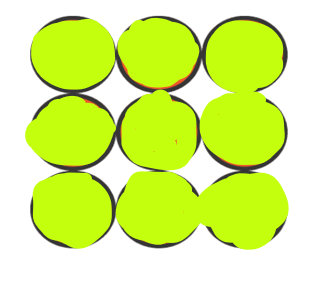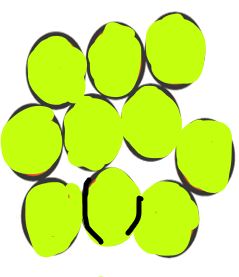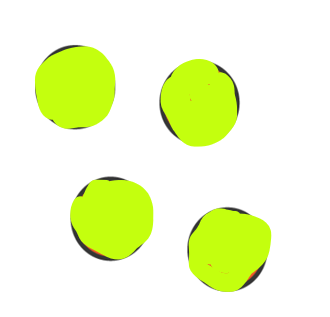Difference Between Solid Liquid and Gas - Definition with FAQs
Anything which occupies space and has a mass is referred to as matter. Everything that we see around us like, water, air, animals, clothes and more, is made up of matter. The state of the matter is also a physical property of matter. Three main forms, namely solid, liquid and gas, may be present for the matter. Some compounds are present as room temperature gases (oxygen, carbon dioxide), and others are available as fluids, such as water and mercury metal at room temperature.
This Story also Contains
- Solids
- Liquids
- Gases
- Comparison between solids, liquids and gas
At normal temperatures, many metals exist as solids. Every substance exists in any of these forms. A substance can undergo a change from one state to another. The properties of solids, liquids, and gases are different from each other. Mostly due to their different configurations and the cohesive force between the molecules, solids, liquids and gases are distinct. Solid molecules are packaged together closely and their cohesive forces are strong. Solids cannot therefore fluctuate.
Compared to solids, liquid molecules are much further apart. Therefore, fluids also have weaker cohesive forces between fluid molecules, compared to solids. Compared to solid and liquid molecules, gas molecules are far more distant. There are also very lowest cohesive interactions among its molecules. This gives the flow and compression of gases. This article makes a comparison between solids, liquids and gases.
Also read -
Solids
The solids are the type of material with a rigid structure that opposes shape and volume changes. The particles in solids are tightly bound and regularly arranged. Its particle vibrates and twists frequently, but does not reveal any movement, as it is tight-knit. Solid is the matter with the highest molecular attraction. Furthermore, it is somewhat difficult to compress because their molecules have fewer gaps. The particles in solids are very close together and can thus not be squeezed or squashed normally.
Attraction forces between the particles keep and hold them together. The solid particles are regularly organized. They only move about a fixed place by vibrating. This provides solids with a stable form and does not fluidize like liquids. The warmer the solid gets, the more rapid the vibration of its particles. This means that when heated, solids expand. Ice is the solid form of water. Even if it is removed from its container, Ice maintains its form when it is frozen. But ice differs from most solids. Its molecules are packaged less tightly than in liquid water. Therefore, Ice floats. Ice floats.

Examples: Stone, Pencil, chair
Related Topics Link, |
Liquids
Liquids are fluids, they have a continuous volume, no fixed form. Liquids take the form of the container in which they are present. Liquid has a minimum surface area because of the fluid surface tension. The particles in liquids are randomly arranged and closely related to many of their neighbour particles. Some gaps exist, but fluids normally cannot be compressed or crushed.
The liquid particles have sufficient energy to release some of the attraction forces between the particles. So liquid particles can move and move about, allowing liquids to flow and to be poured. The gaseous form or condition of the water is water vapour. Water vapour is invisible, as opposed to ice or water. Whenever we breathe, we exhale water vapour. We cannot see water vapour when we exhale, but we can see the water vapour condensing (which becomes liquid).

Examples: Water, kerosine, honey
Gases
Gas is a state that is freely diffused in every direction. Gases thus fill in whatever quantity the whole space available. It comprises no particular shape or volume of the particles. They are loosely held, and they have a lot of space for free and continuous movement between them. Particulate matter in gases is widely separated and organized at random to make it easy to compress. The particles in a gas have sufficient energy to overcome the attractive forces between the particles thus they are free to flow in any direction. They move fast in straight lines, colliding with one another and their container walls.

Examples: Oxygen, methane, air
Also, students can refer,
Comparison between solids, liquids and gas
- Rigidity
Solids are very rigid in nature. On the other hand, liquids and gases are not rigid.
- Fluidity
There is no ability for solids to flow. Liquids can flow from higher to lower levels (concentration). In every direction, gas can flow.
- Shape and volume
Because of their hard structure, solids have distinct shapes and volumes. Liquids have a certain volume, but they lack a definite shape and they gain the shape of the container in which they are stored. There is no clear shape or volume of gases.
- Intramolecular interaction
Particles in a solid are tightly packaged and can vibrate, but not move. In liquids, intermolecular interaction is considerably weaker than that of solids so that there is sufficient energy for molecules or particles to move. In the case of gases, the intermolecular bond is not significant, so that the gas molecules and particles can travel freely and fast.
- Compressibility
It is not possible to compress solids. and liquids are compressible. Gasses can be severely compressed.
- Storage
Without a container or vessel solids can be easily stored. Without a vessel or container, liquids cannot be stored. Vessels are required to store gases.
Also check-
- NCERT Exemplar Class 11th Chemistry Solutions
- NCERT Exemplar Class 12th Chemistry Solutions
- NCERT Exemplar Solutions for All Subjects
NCERT Chemistry Notes: